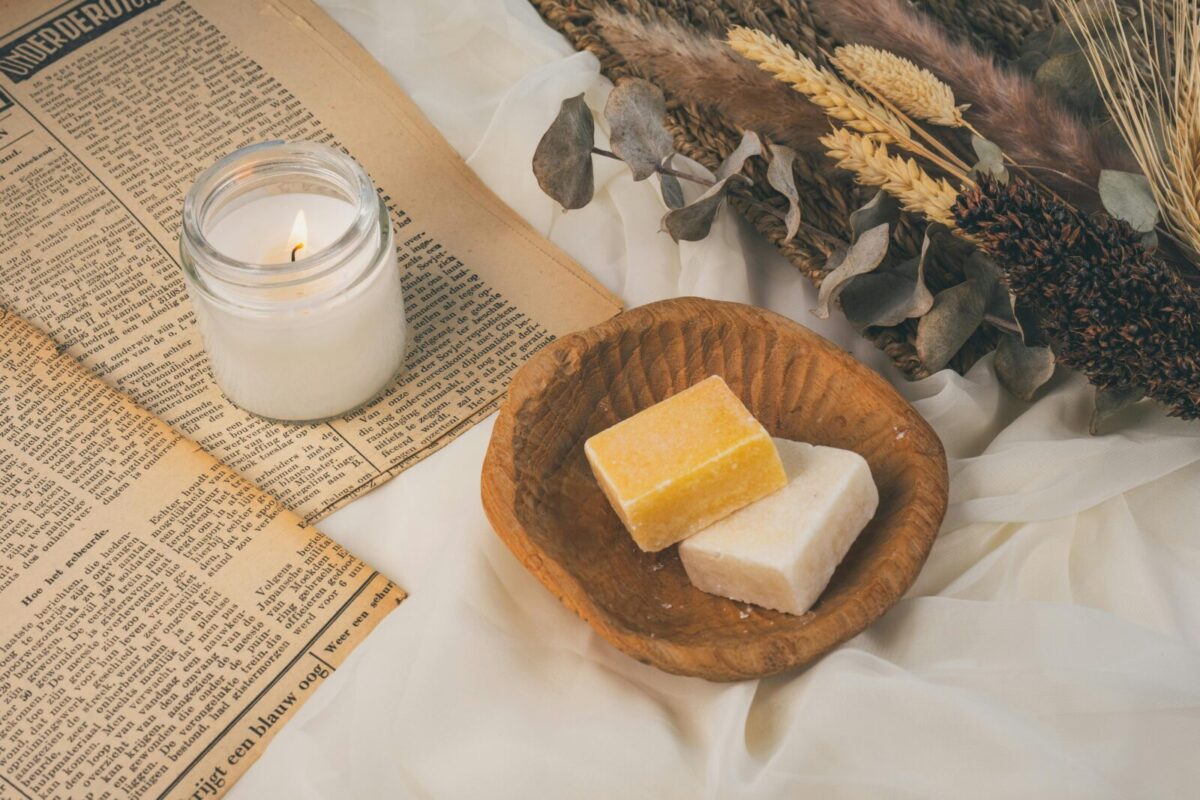Soap
The Environmental Impact of Handmade vs. Commercial Soap
Estimated reading time: 5 minutes
Table of contents
- Ingredients: Natural vs. Synthetic
- Packaging: Waste-Free vs. Plastic Overload
- Production Process: Eco-Friendly Artisanal Methods vs. Mass Production
- Water Usage and Pollution
- Sustainability of Handmade Soap Ingredients
- Carbon Emissions and Transportation
- Reducing Your Environmental Footprint with Handmade Soap
- Disposal Responsibility
The environmental impact of the products we use daily is more significant than ever before. In the case of soap, the differences between handmade and commercial products go beyond skincare—how these soaps affect the planet is a key factor in making an informed decision. In this guide, we’ll compare the environmental impact of handmade soap with that of commercial soap, analyzing how ingredients, packaging, and production methods influence the environment. By the end, you’ll understand why your choice of soap can make a difference not just for you but for the Earth as well.
Ingredients: Natural vs. Synthetic
One of the most significant factors in the environmental impact of handmade soap is the use of natural, eco-friendly ingredients. Handmade soaps typically feature natural oils like olive oil, coconut oil, and shea butter, which are sustainably sourced. These ingredients are biodegradable and break down naturally, reducing their impact on ecosystems.
On the other hand, commercial soaps often rely on synthetic ingredients, including harsh chemicals like sulfates and parabens. These synthetic additives can contaminate water supplies and are difficult to break down, leading to long-term environmental harm.
- Handmade soap ingredients: Natural oils and butters from sustainable sources.
- Commercial soap ingredients: Synthetic detergents, parabens, and other chemicals that can harm the environment.
The farming practices behind these ingredients are also important. For example, handmade soap makers often source ingredients through fair trade and organic farming, which have a lower environmental footprint compared to the large-scale, often unsustainable practices involved in commercial soap production.
Packaging: Waste-Free vs. Plastic Overload
Packaging is another area where the environmental impact of handmade soap outshines that of commercial soap. Handmade soap is typically sold with minimal packaging—think recyclable paper, compostable wrappers, or even completely packaging-free. Many artisanal soap makers are committed to reducing plastic waste, offering eco-friendly options that align with a zero-waste lifestyle.
In contrast, commercial soaps are often packaged in plastic bottles and containers, contributing to the growing problem of plastic pollution. These plastic bottles are rarely recycled and can take hundreds of years to decompose, releasing microplastics into the environment.
- Handmade soap packaging: Minimal to zero-waste packaging (paper, compostable materials).
- Commercial soap packaging: Plastic bottles and containers contribute to plastic waste.
By choosing handmade soap, you’re reducing the plastic waste that contributes to environmental degradation.
Production Process: Eco-Friendly Artisanal Methods vs. Mass Production
The production process is another critical difference in the environmental impact of handmade soap versus commercial soap. Handmade soap is typically produced in small batches by artisans who prioritize eco-friendly methods. This process uses less energy, reduces water waste, and generates fewer harmful byproducts.
In contrast, commercial soap is mass-produced using energy-intensive processes that require large amounts of water and electricity. The chemicals used in the manufacturing process can lead to pollution, contaminating local water supplies and damaging ecosystems. Mass production also results in more waste due to the sheer volume of products being produced and discarded.
- Handmade soap production: Small-scale, energy-efficient processes.
- Commercial soap production: Large-scale, resource-heavy, and often environmentally harmful.

Water Usage and Pollution
When considering the environmental impact of handmade soap, water usage is a key factor. Handmade soap production generally requires less water than commercial soap production, which often uses large quantities of water not just during the manufacturing process but also in diluting the chemicals. Commercial soap production can also release harmful chemicals into water bodies, leading to water pollution that affects local ecosystems.
- Handmade soap: Less water usage, fewer harmful byproducts.
- Commercial soap: Water-intensive and contributes to water pollution through chemical runoff.
Sustainability of Handmade Soap Ingredients
One of the defining features of handmade soap is its commitment to sustainability. Many soap makers carefully select ingredients that are ethically sourced and sustainable. For example, handmade soaps often avoid palm oil or use certified sustainable palm oil to prevent deforestation.
Handmade soap ingredients like coconut oil, olive oil, and essential oils are frequently sourced through fair trade, ensuring that farming practices are not only sustainable but also ethical. This emphasis on sustainable sourcing reduces the environmental toll of the soap-making process.
In contrast, commercial soap production often relies on mass-produced ingredients like palm oil, which has been linked to large-scale deforestation and habitat destruction.
Carbon Emissions and Transportation
Commercial soaps are often mass-produced in large factories and transported over long distances, increasing the carbon footprint associated with their production and distribution. The energy required to produce, package, and ship these products contributes significantly to greenhouse gas emissions.
On the other hand, handmade soap is typically produced locally in small batches. This reduces transportation emissions and often supports local economies, further lowering the overall environmental footprint.
- Commercial soap: Higher carbon emissions due to large-scale production and long-distance shipping.
- Handmade soap: Lower carbon footprint through local production and distribution.
Reducing Your Environmental Footprint with Handmade Soap
By switching to handmade soap, you’re not just choosing a better product for your skin but also making a positive impact on the planet. Handmade soaps are crafted with sustainability in mind, from their ingredients to their packaging and production methods.
- Supporting eco-friendly businesses: Many handmade soap makers are small businesses dedicated to ethical, sustainable practices.
- Long-term environmental benefits: Reducing plastic waste, choosing biodegradable ingredients, and supporting sustainable farming all contribute to lowering your overall environmental footprint.
For those looking to further minimize their impact, zero-waste and refillable soap options are becoming more widely available, allowing consumers to enjoy handmade soap with even less waste.
Disposal Responsibility
Even with eco-friendly packaging, how you dispose of your soap’s packaging matters. Composting biodegradable materials or recycling paper packaging ensures the environmental benefits are fully realized. Consumers should also aim to dispose of commercial soap packaging responsibly by recycling plastic containers where possible to reduce environmental harm.
Conclusion
When comparing the environmental impact of handmade soap and commercial soap, it’s clear that handmade soap is the more sustainable option. From the use of natural, biodegradable ingredients to minimal, plastic-free packaging, handmade soap is a choice that benefits both your skin and the environment. If you’re looking for a way to reduce your environmental footprint, switching to handmade soap is a small but meaningful step in the right direction. Explore our range of soap bars, carefully crafted with eco-friendly ingredients and sustainable practices, and start making a difference today!
